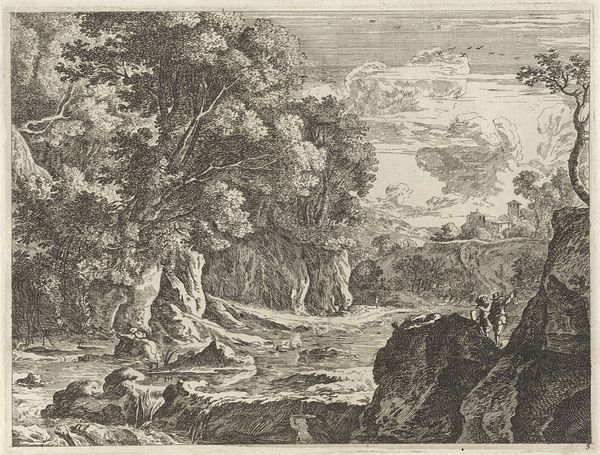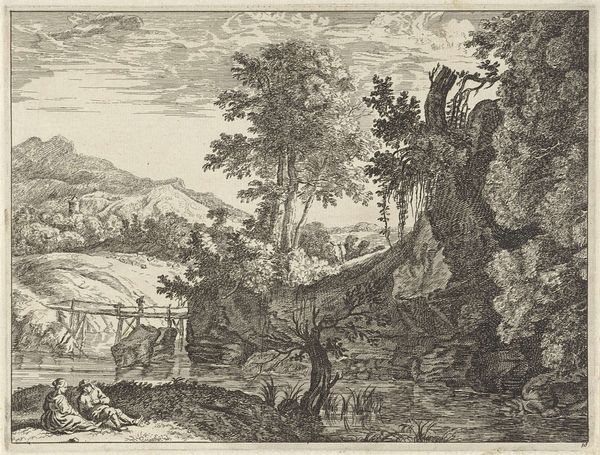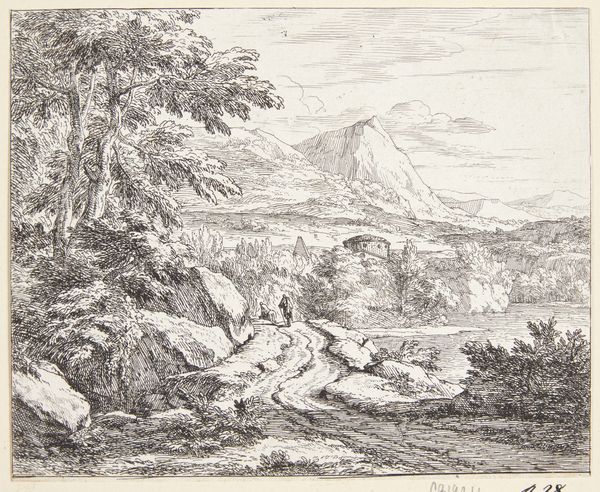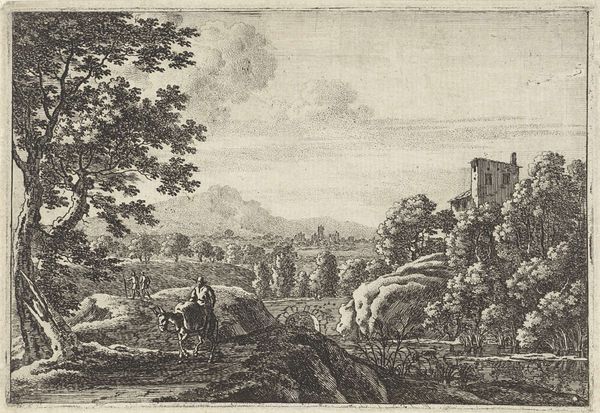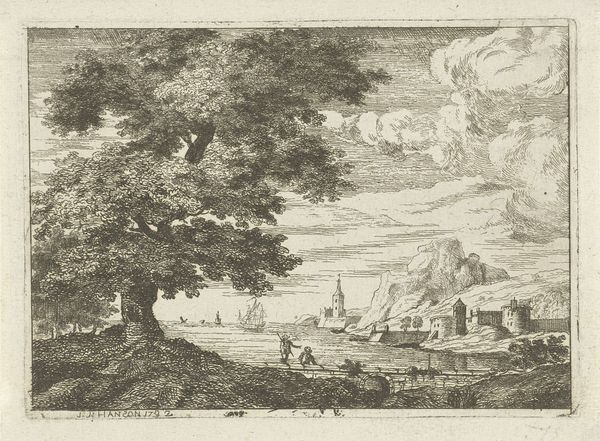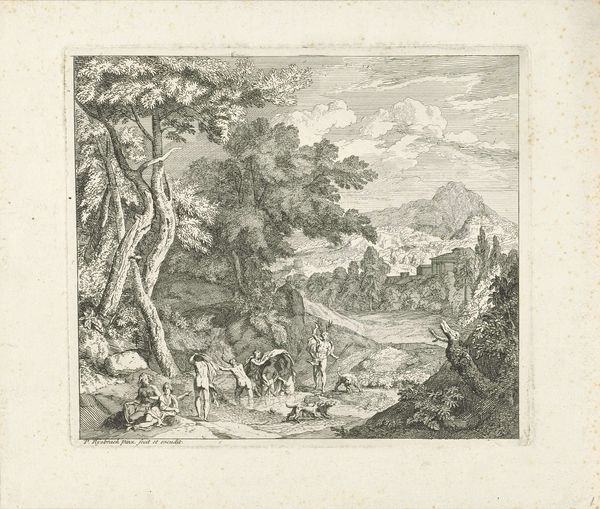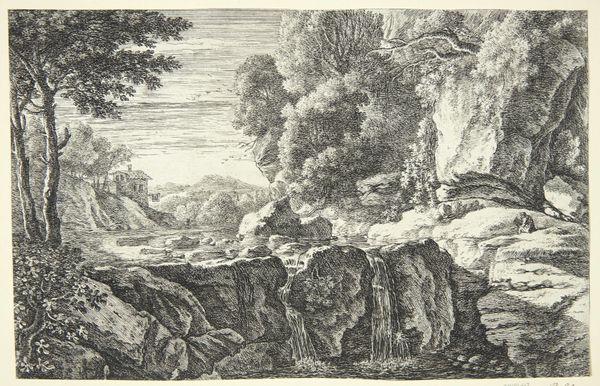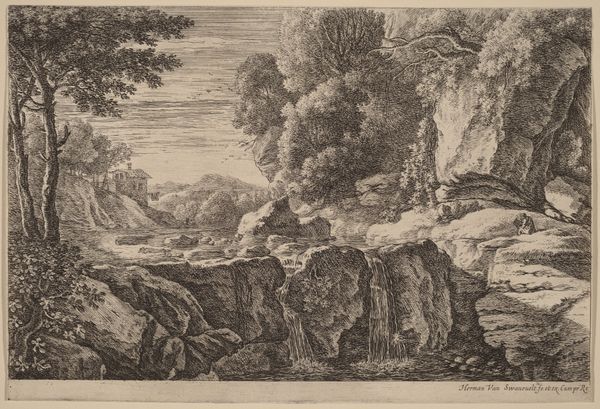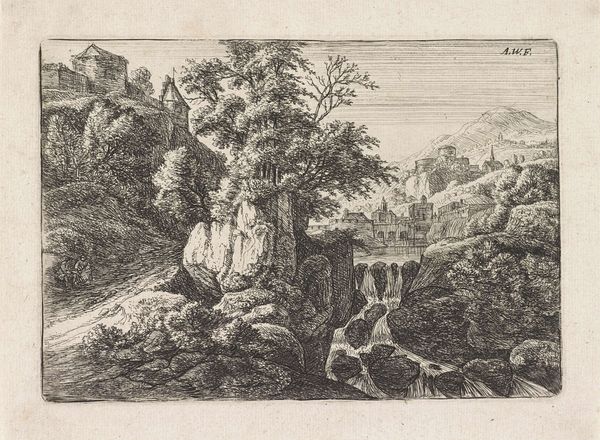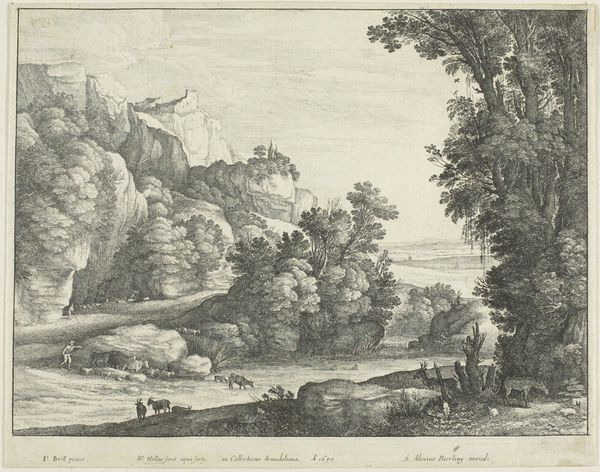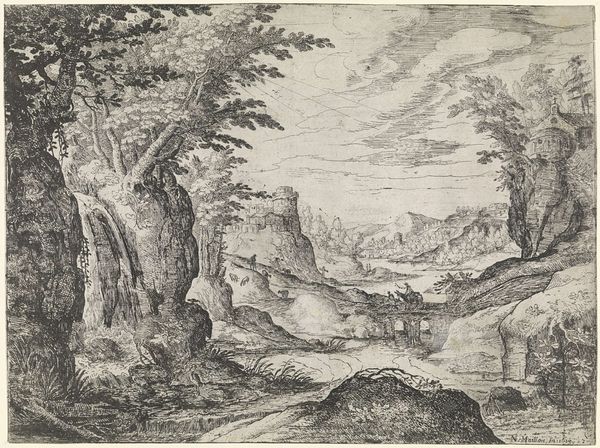
drawing, print, etching, intaglio, engraving
#
drawing
#
baroque
# print
#
etching
#
intaglio
#
old engraving style
#
landscape
#
engraving
Dimensions: height 128 mm, width 165 mm
Copyright: Rijks Museum: Open Domain
Editor: This print, "Landschap met bergen en ruineuze gebouwen," from 1701, is quite captivating. The architecture seems so integrated with nature. What do you see in this piece, considering its historical context? Curator: It is tempting to consider the ruin as the central figure. But how does this choice perpetuate specific historical narratives? Instead, I suggest viewing the landscape as an act of resistance against narratives of permanence. What conversations does it evoke around power structures, landscape ownership, and cultural memory in the baroque period, as seen through a contemporary lens? Editor: Resistance? I wouldn’t have thought of that. It makes me think about how landscapes are represented, even now. Are the figures included to show how small humanity is compared to the environment? Curator: Perhaps. Or could they be interpreted as observers, implicated in the transformations taking place? How might their presence—or the viewer’s imagined presence—complicate the idealized landscape? The romanticising of ruins obscures violent land appropriation and wealth extraction. Editor: So, it's not just about the aesthetic of decay but also about unpacking the narratives *behind* the image. Curator: Precisely. Art doesn't exist in a vacuum. How can we draw on queer theory and feminist geography to dissect the relationships of domination encoded within the representation of ‘nature’ and our experience of landscapes? Editor: This has given me a lot to consider—that even a seemingly simple landscape etching holds complex layers of historical and social context, if we examine the circumstances behind its creation. Curator: Indeed, we must think critically about the choices, biases, and underlying power dynamics embedded within landscape traditions in art history and to resist singular interpretations.
Comments
No comments
Be the first to comment and join the conversation on the ultimate creative platform.
